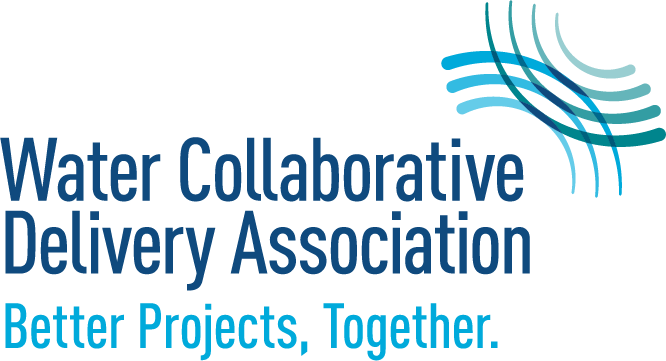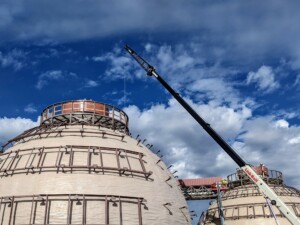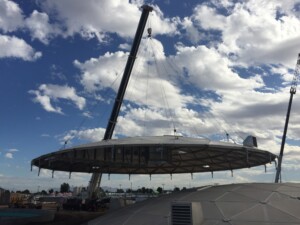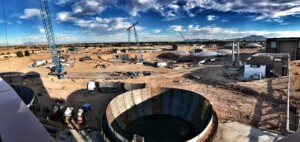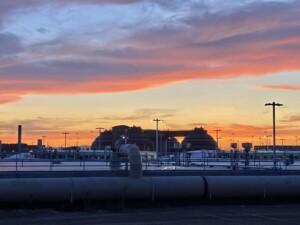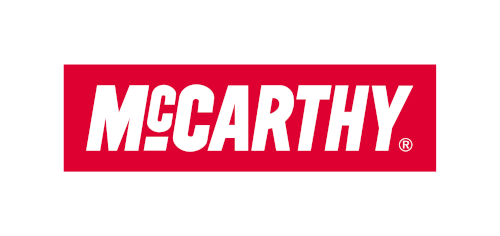CHALLENGE
The project had many goals, but the most notable included optimizing short- and long-term operational performance, collaborating for cost-effective delivery, and enriching the quality of life for the community.
The project focused on life cycle cost savings and the inclusion of several strategies and technologies to maintain cost control and certainty. Several new or different technologies were implemented throughout the expanded facility, which were specifically chosen to overcome and address specific operations and maintenance (O&M) challenges and needs of the plant staff.
Although construction encountered challenges to working conditions due to the COVID-19 pandemic, these challenges were mitigated. One of the primary difficulties to this expansion was overcoming a significant increase in the influent wastewater strength resulting from water conservation and commercial growth in the service area. This growth had increased significantly, roughly 20% to 30%, from the original facility design criteria. To accommodate this increased wastewater strength as well as the plant capacity expansion needs, a total of three new aeration basins and four new secondary clarifiers were required to match the existing basins.
As an alternative, several strategies were implemented in the secondary treatment process to effectively accommodate the increased loadings with only two new aeration basins and three new secondary clarifiers. These strategies resulted in a rerating of the existing and new components of the overall secondary treatment system while still effectively meeting a total nitrogen limit of 10 mg/L.
Approach
This plant is the primary means of treating wastewater in the service area, and several years prior to completion of construction, plant staff were challenged to operate the existing facilities for extended periods at or beyond the original design capacity of the plant.
Achieving the desired expanded capacity required converting the existing conventional modified Ludzack-Ettinger (MLE) process to a four-stage Bardenpho process; converting the existing coarse air bubble diffused aeration to fine bubble diffused aeration; increasing the mixed liquor recycle (MLR) pumping capacity; and incorporating side-stream recycle treatment using centrate and a return activated sludge reaeration basin (CaRRB) process integrated within the aeration basin.
This approach resulted in the ability to defer one aeration basin, one secondary clarifier, and three process blowers, saving upwards of $25 million in construction costs from the baseline approach. The project team also collaborated to develop real-time operational strategies to squeeze capacity out of the existing infrastructure prior to new facilities and additional capacity being placed online.
One such strategy was implementing a solid retention time (SRT) control strategy for operating the aeration basins, which improved sludge settleability in the downstream secondary clarifiers and resulted in a more robust, consistent operating strategy to maintain operational compliance within the nutrient permit limits.
A continuous operations limitation was the replacement of aging infrastructure throughout the plant, including a full replacement of existing programmable logic controllers (PLCs) and variable frequency drives (VFDs), concurrent with the installation of new infrastructure required to support the expanded facility.
Approximately 20 PLCs and 60 VFDs were replaced, reconfigured, rewired, and reprogrammed as part of this asset renewal effort, in addition to coordinating new PLCs and VFDs.
During the preconstruction phase, the project team identified 130 key outages and critical tie-ins, or maintenance of plant operations (MOPOs). To address this, weekly MOPO planning meetings were held throughout the construction phase with as many as 25 key stakeholders contributing ideas.
Results
By closely monitoring the project risks and cost budgets throughout the multi-year project and consistently working to develop innovative cost-cutting measures, the team delivered significant savings to the owners. As a result, additional funds were made available from the overall guaranteed maximum price (GMP) and approximately $1.7 million was reallocated toward additional plant repairs, including the removal and replacement of a failed coating system in the existing digester tanks.
The project has won several awards, including: ENR Southwest 2021 Best Water/ Environment Project, AZRE 2021 Red Award Finalist, 2020 AZ Water/Wastewater Treatment Plant of the Year (AZ Water), 2021 Arizona Chapter APWA Project of the Year, 2021 Best in Concrete (ACI), and 2021 Grand Award – Engineering Excellence Awards (ACEC Arizona).
Other WCDA member firm involved: Brown and Caldwell (design engineer for solids treatment facilities)
